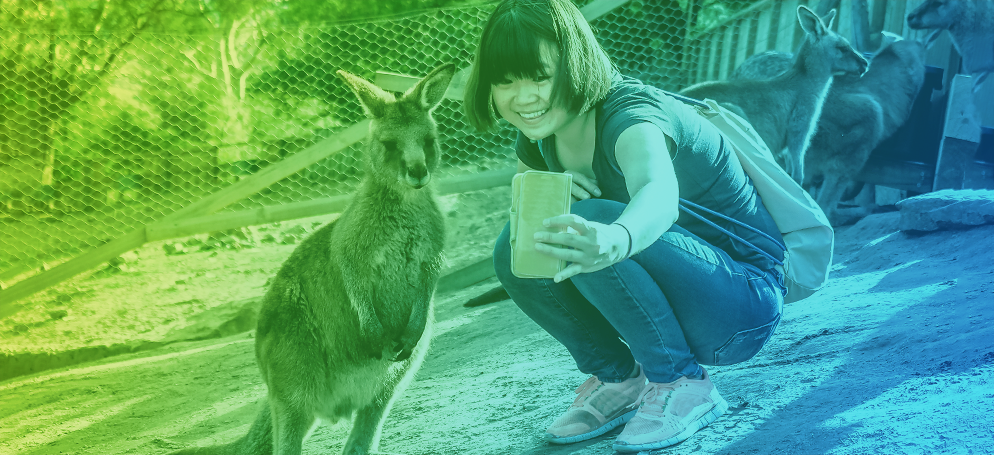
3 things to know about Australia
Australia is one of the world’s largest countries, the only one to cover an entire continent, and has more kangaroos than people (really). It’s also a fantastic market opportunity for British businesses looking to expand internationally. Here are three things to know about the land Down Under.
The UK-Australia trade deal comes into force in 2023
2023 is the year that the free trade agreement (FTA) between the UK and Australia comes into effect. The FTA was – is – symbolic, since it was the first new trade deal the UK negotiated from scratch since leaving the European Union. The UK government hopes it will increase trade with Australia by 53%, boost the UK economy by £2.3 billion, and add £900 million to household wages in the long run.
A summary of the FTA is here but in essence, the government claims that there will be:
- Greater access to the Australian market for British services and investors
- Tariff-free trade for all British exports
- More opportunities to travel and work in Australia for British people aged 18 to 35
- More opportunities for UK businesses to trade digitally with Australia
- Lower prices for consumers and businesses
- Greater opportunity for UK businesses to access the Australian public procurement market
Although the trade agreement was signed in 2021, it had to be debated and ratified by both countries’ parliaments, which took place in 2022. The agreement is expected to come into force soon. One sector expected to prosper is food and drink – the FTA allows food and drink products to exit customs more quickly than before, so businesses can have certainty and ship with ease when exporting to Australia.
In 2021, the combined value of UK/Australian trade was £14.4 billion. A total of 15,300 UK VAT-registered businesses, employing a total of 3.4 million people, exported goods to Australia that year.
Australia’s leading tourism body wants to raise the age for working holiday visas to 50
A working holiday visa to Australia (and vice versa to the UK) has been popular amongst many younger people. The visa allows holders to live and work in Australia for 12 months which can be extended for another year subject to certain types of work being carried out. Traditionally, the visa was for under-30s and the new FTA increases it to under-35s, and allows holders to stay for up to three years (subject to certain requirements). Now, Australia’s leading tourism body wants to go further – by raising the working holiday visa cut-off to age 50.
While the policy remains undecided, the rationale for raising the age limit would be to address worker shortages across Australia. By including older people in the scheme, Australia could broaden the range of skills and experiences it can attract, boosting the labour market. Australia’s federal government is conducting a migration review to find ways of addressing worker shortages and this is one idea potentially on the table.
Australia is the 13th largest e-commerce market in the world – and growing
Australia generated revenues of just under US $41 billion from e-commerce in 2021, which made it the 13th largest e-commerce market in the world. Revenues dipped slightly in 2022 (attributed to the effects of the Russia/Ukraine war) but according to Statista, are forecast to hit US $50 billion in 2023.
Big players in Australian e-commerce include Woolworths (which in Australia, is a grocery chain), Coles (also a grocery chain), Amazon and Apple.
Food and personal care is the largest e-commerce segment in Australia, followed by (in order) fashion, toys, hobby crafts and DIY, electronics and media, furniture and appliances. According to Australia Post’s Inside Australian Online Shopping Report 2022 (which reports on 2021):
- More than 4 in 5 Australian households have bought something online.
- Purchase frequency is on the rise – 73% more purchases were made online in 2021 than in 2019.
- The average Australian consumer purchased from a total of 15 retailers in 2021, across 8 categories.
- Compared to 2019, shoppers are making more purchases during the day, with an 11% drop in mid-evening (7pm to 10pm) and a corresponding 11% rise in mid-afternoon (2pm to 5pm) purchases. (Bear in mind that Australia’s size means it covers three time zones.)
- Over 8 in 10 Australian shoppers say they care about sustainability, with 60% saying they are willing to pay more to buy sustainable products. Groceries, fashion, and beauty are the categories people were most likely to buy sustainable products from.
- Consumers in New South Wales spent more than any other state, with West Australians ranked last.
Key drivers for Australian consumers include free delivery, discounts and coupons, hassle-free returns, loyalty rewards and points, plus positive consumer reviews.
Australia at a glance…
- Australia has a population of about 25 million – which makes it the 55th largest country in the world by population. 85% of its population lives within 50km of the coast.
- At 7,682,300 square kilometres, Australia covers 5% of the world’s land area. This makes it the 6th largest country in the world by landmass (after Canada, the US, Russia, Brazil, and China).
- Australia is both the world’s smallest continent and largest island. It’s ideally positioned for tapping into Asia and acts as a hub for many multinationals in the region.
. . .
Looking to grow your business internationally? Oban can help. Get in touch to find out how.
Oban International is the digital marketing agency specialising in international expansion.
Our LIME (Local In-Market Expert) Network provides up to date cultural input and insights from over 80 markets around the world, helping clients realise the best marketing opportunities and avoid the costliest mistakes.